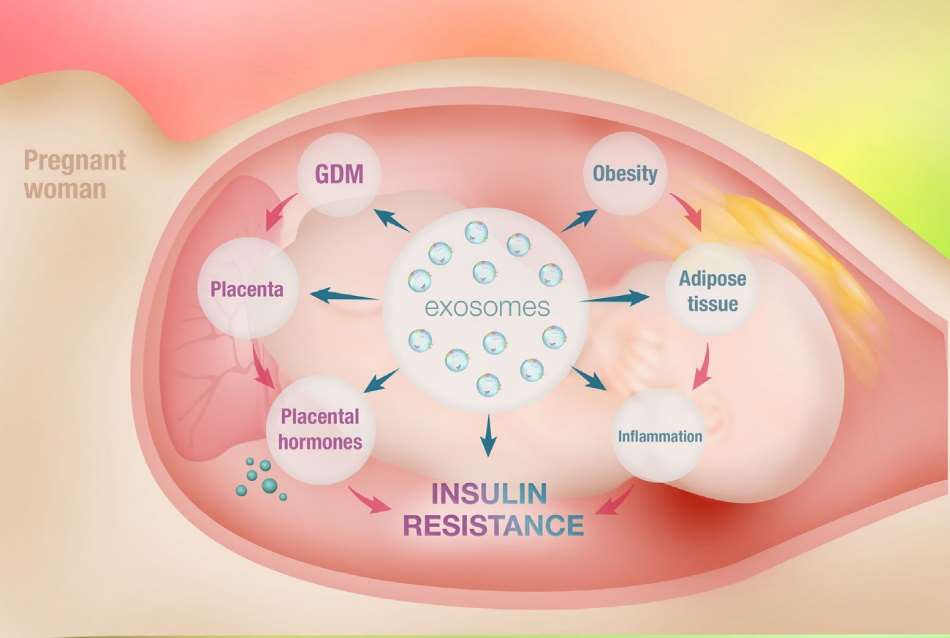Gestational Diabetes Mellitus Diagnosis-Applied Exosomes
Gestational Diabetes Mellitus (GDM) is one of the most common pregnancy complications during pregnancy, which refers to different degrees of abnormal glucose tolerance during pregnancy. Regardless of the early, middle, and late stages of pregnancy, the perinatal period, or the long-term, GDM will cause serious harm to both the mother and the offspring. At present, the pathogenesis of GDM is not completely clear, and there is no unified international standard for the diagnosis of GDM. With the rapid development and deepening of life science research, a variety of omics-related concepts have emerged one after another. The rapid development of multi-omics technology also provides useful clues for the exploration of early diagnosis markers and pathophysiological mechanisms of GDM. Excitingly, a large number of studies have reported that various biochemical indicators in exosomes are differentially expressed in GDM patients, which suggests that the detection of exosomes from the body fluids of pregnant women may be helpful for the early prediction of GDM. Creative Biolabs focuses on scientific research and clinical transformation in the field of exosomes and is committed to providing exosome-related scientific research and technical services to global customers. You can choose our sequencing platform to advance the discovery of GDM biomarkers in exosomes.
The Role of Exosomes in Gestational Diabetes Mellitus
Exosomes are nanometer-sized particles with a diameter of 50–120 nm, which participate in the transmission of information between cells, including the transport of bioactive molecules such as proteins, lipids, and RNA. Studies have shown that high glucose, hypoxia, and obesity during pregnancy are involved in the induction of increased exosome release. GDM patients have elevated levels of placenta-derived exosomes in plasma compared with normal pregnant women. At the same time, exosomes can further affect the endothelial function of GDM patients by affecting the L-arginine/nitric oxide signaling pathway in endothelial cells, endothelial activation, oxidative stress, and regulating gene expression through miRNA. In addition, visceral fat in GDM patients may lead to insulin resistance by regulating the adipose-derived exosomal miRNA-148 family, thereby affecting the development of GDM. Therefore, some contents of exosomes may be used as biomarkers for the diagnosis of GDM.
 Fig.1 Schematic diagram of intercellular communication between adipose tissue and placenta mediated by adipose tissue-derived exosomes.1,2
Fig.1 Schematic diagram of intercellular communication between adipose tissue and placenta mediated by adipose tissue-derived exosomes.1,2
Creative Biolabs can provide customers with comprehensive high-throughput sequencing solutions, covering exosomal proteome sequencing, exosomal whole transcriptome sequencing, exosomal miRNA sequencing, exosomal lncRNA sequencing, exosomal circRNA sequencing, etc. Our experienced experts will provide you with a full range of project analyses and designs, and develop standard or customized solutions for library construction, sequencing, bioinformatics analysis, and other services according to project characteristics. In addition, our caring project management will also provide you with project updates, and consultations, and provide after-sales service at every stage of your project. If you want to discover biomarkers in exosomes that can be used to diagnose GDM, please feel free to contact us with your ideas to achieve your goals.
References
-
Jayabalan, N.; et al. Cross talk between adipose tissue and placenta in obese and gestational diabetes mellitus pregnancies via exosomes. Frontiers in Endocrinology. 2017, 8:239.
-
under Open Access license CC BY 4.0, without modification.
For Research Use Only. Cannot be used by patients.
Related Services:

 Fig.1 Schematic diagram of intercellular communication between adipose tissue and placenta mediated by adipose tissue-derived exosomes.1,2
Fig.1 Schematic diagram of intercellular communication between adipose tissue and placenta mediated by adipose tissue-derived exosomes.1,2









